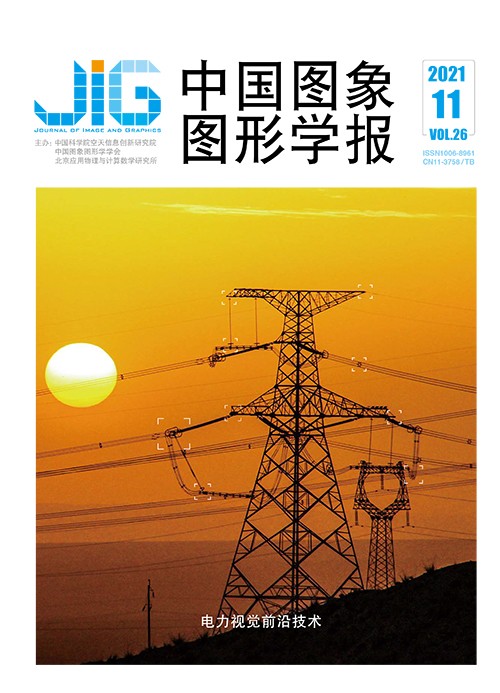
输电线路部件视觉缺陷检测综述
赵振兵1,2, 蒋志钢1, 李延旭1, 戚银城1,2, 翟永杰3, 赵文清3, 张珂1,2(1.华北电力大学电子与通信工程系, 保定 071003;2.华北电力大学河北省电力物联网技术重点实验室, 保定 071003;3.华北电力大学控制与计算机工程学院, 保定 071003) 摘 要
随着我国电网系统的不断发展,基层巡检作业负担越来越重,运维成本越来越高,如何实现输电线路部件缺陷的智能化检测变得愈发重要。同时,由于国家《新一代人工智能发展规划》的提出和国家电网"数字新基建"的部署,人工智能应用于电力设备运维的相关技术得到了快速发展,对输电线路部件视觉缺陷准确检测成为亟待解决的关键问题之一。早期基于图像处理和特征工程的部件视觉缺陷检测方法对图像质量的要求较高,无法真正应用于现实复杂的输电线路作业环境;随着深度学习的兴起,基于深度学习的检测模型可以有效地将部件目标及其缺陷从复杂的输电线路航拍图像中提取出来,既节省了人工设计特征的时间,又在性能上达到了显著提升,因此逐渐成为主流研究方法。本文首先描述了基于传统算法的输电线路关键部件视觉缺陷检测技术,回顾了深度学习的发展过程并分析了深度学习在缺陷检测领域的优缺点;围绕输电线路上3个重要的部件:绝缘子、金具以及螺栓,介绍了其定位与缺陷检测的研究现状;分析了输电线路部件缺陷检测中研究的样本不平衡问题、小目标检测问题、细粒度检测问题等几个关键问题;分析了符合电网巡检任务复杂场景需求和故障诊断标准的输电线路部件缺陷检测技术的未来发展趋势。
关键词
Overview of visual defect detection of transmission line components
Zhao Zhenbing1,2, Jiang Zhigang1, Li Yanxu1, Qi Yincheng1,2, Zhai Yongjie3, Zhao Wenqing3, Zhang Ke1,2(1.Department of Electronic and Communication Engineering, North China Electric Power University, Baoding 071003, China;2.Hebei Key Laboratory of Power Internet of Things Technology, North China Electric Power University, Baoding 071003, China;3.School of Control and Computer Engineering, North China Electric Power University, Baoding 071003, China) Abstract
With the continuous improvement of China's economic strength and people's living standards, the requirements of the state and the people for electric power are gradually improving. To meet the increasing demand for electricity, the grid system is constantly developing, leading to increased time and capital costs required for the safe operation and maintenance of power grids. The rise of unmanned aerial vehicle (UAV) technology has introduced new detection ideas, which make the intelligent and efficient detection of defects of transmission line components a reality. Compared with manual inspection, UAV has advantages of low cost, high efficiency, strong mobility, and high safety. Thus, it has gradually replaced manual inspection. At the same time, artificial intelligence (AI) technology based on deep learning is also developing rapidly, and the related technology of applying AI to the maintenance of power equipment has developed rapidly in recent years. However, how to accurately and efficiently detect the visual defects of transmission line components is a key problem to be solved. Early component visual defect detection methods based on image processing and feature engineering have high requirements on image quality, and designing features for various transmission line components consumes much time and money. The current UAV aerial photography technology cannot meet the requirements of image quality, and its detection accuracy cannot meet the actual requirements of defect inspection of basic transmission line components. Thus, applying the component visual defect detection method based on image processing and feature engineering to complex real-life scenes is impossible. With deep learning, transmission line component defect detection models based on deep learning can effectively extract transmission line component objects and defects from aerial images with complex backgrounds. Deep learning-based detection models have many other advantages. 1) Deep learning can automatically extract multi-level, multi-angle features from original data instead of artificial design. 2) Deep learning has strong generalization and expression capabilities, that is, it possesses translation invariance. 3) Deep learning is more adaptable to complex real-world environments than traditional techniques. Therefore, the object detection model based on deep learning is an inevitable choice for processing transmission line inspection images. Before applying a deep learning model to the defect detection of key components of transmission lines, a complete defect data set of components should be created for the training of the deep learning model. However, in transmission line component defect detection, no data set is available to the public. This work aims to review the visual defect detection methods of transmission line components. On the basis of extensive research on the visual defect detection of transmission line components, existing detection methods are summarized and analyzed. First, the visual defect detection technology of key parts of transmission lines is described based on traditional algorithms. The development process of deep learning is reviewed, and the advantages and disadvantages of deep learning in defect detection are analyzed. Second, the status of research on the positioning and defect detection of three important components on transmission lines(i.e., insulator, metal, and bolt)is introduced. Third, several key problems, such as sample imbalance, small object detection, and fine-grained detection,in transmission line component defect detection are analyzed. Lastly, the future development trend of transmission line component defect detection technology that meets the requirements of complex-scene grid inspection and fault diagnosis criteria is analyzed. The conclusion is that the development of visual defect detection of transmission line components cannot be separated from the development of deep learning in the field of image processing and image data augmentation. In short, the establishment of a high-precision, high-efficiency, strongly intelligent, multi-level, full-coverage defect detection model of key components of transmission lines on the basis of deep learning remains unrealized.
Keywords
power equipment operation and maintenance transmission line components visual defect detection deep learning object detection knowledge guidance
|



 中国图象图形学报 │ 京ICP备05080539号-4 │ 本系统由
中国图象图形学报 │ 京ICP备05080539号-4 │ 本系统由